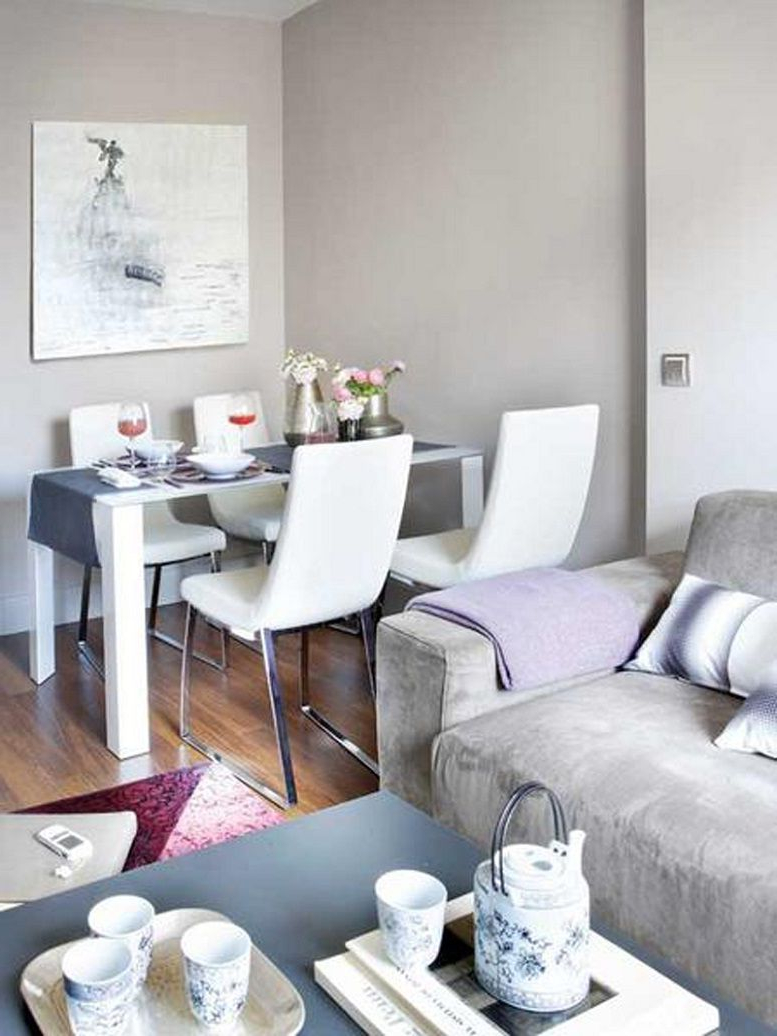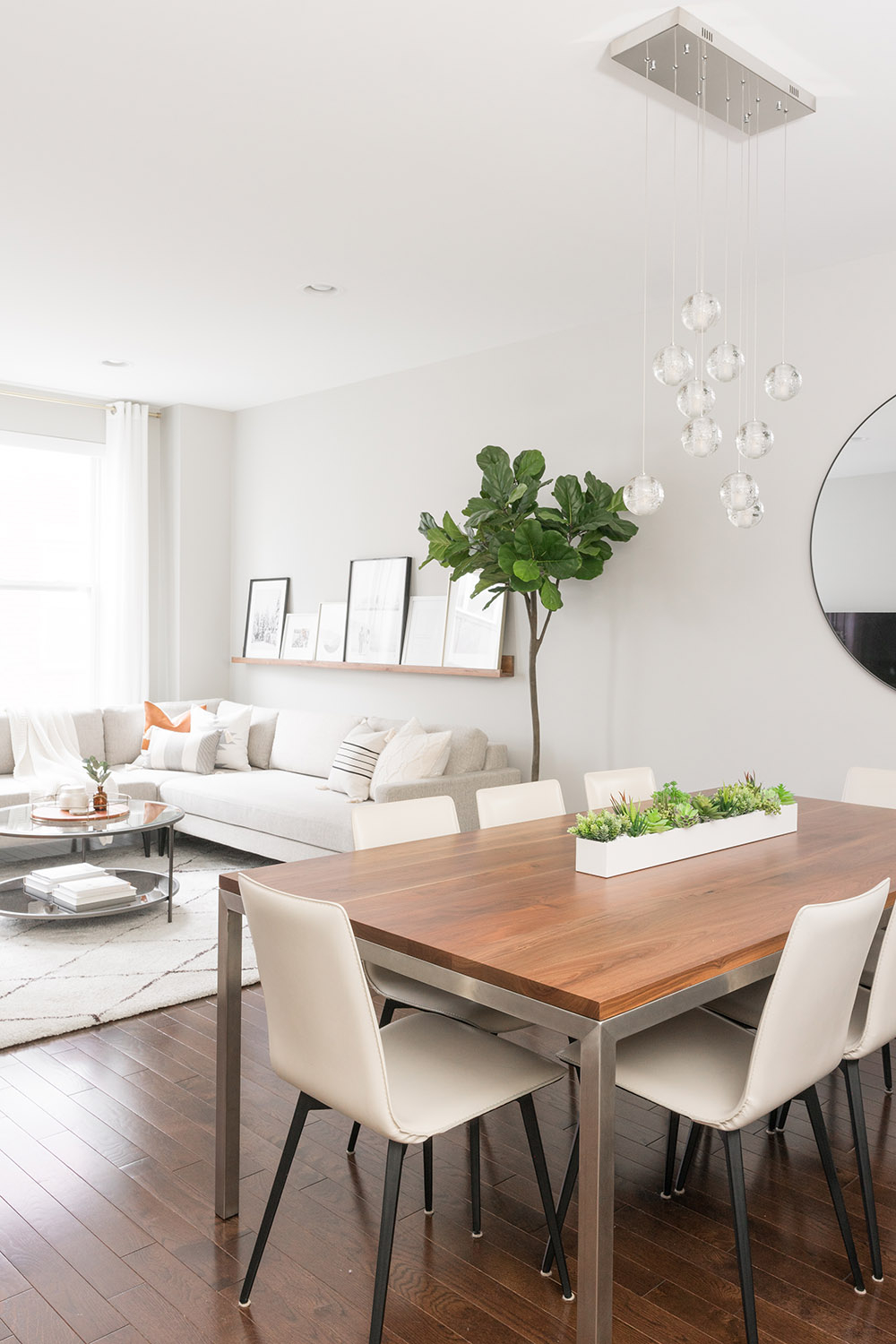What happens when you have a dining room that’s just a little too small for your dinner parties and a living room that feels cramped despite all your furniture? You might think you’re stuck with limited options, but there’s actually a whole world of clever solutions waiting to be discovered. These spaces don’t have to feel confining or uninviting. With the right approach, even the tiniest corners can become the heart of your home.
Let’s face it – many of us live in spaces that aren’t exactly spacious. Whether it’s a studio apartment, a converted garage, or simply a home where square footage is at a premium, we often find ourselves wrestling with dining and living areas that seem to have a mind of their own. They might be too small for the number of guests you want to entertain, or they might feel too cluttered with all your favorite things. But here’s the thing – small spaces can be some of the most charming and functional areas in your home. It’s all about seeing potential where others see limitations. The secret lies in thinking differently about how you use space, what you prioritize, and how you can create zones within zones.
Understanding Your Space’s Potential
Before diving into any transformation, take a careful look at what you already have. Measure everything – walls, doorways, windows – and note where light enters naturally. Sometimes, the biggest problem isn’t the size of the room, but how you’ve arranged your furniture. A dining room that feels cramped might just need a different layout. Perhaps your dining table sits too close to the wall, or maybe your living room chair blocks the main pathway. Consider how people move through the space. When you understand how your room functions, you can start to make changes that will feel natural rather than forced. Ask yourself: What’s the primary function of this space? Is it mostly for eating, socializing, working, or relaxing? Knowing this helps you design around the most important activities.
Multi-Purpose Furniture Solutions
This is where creativity really shines. Multi-purpose furniture is like having a magic wand for small spaces. Think about tables that can expand or fold away when not in use. A dining table that doubles as a work surface during the day and transforms into a party-ready centerpiece at night. Or consider a coffee table with hidden storage that can hold books, games, or extra blankets. In the living room, a loveseat that converts to a bed for overnight guests, or a console table that serves as both entryway storage and a spot for displaying photos and plants. These pieces don’t just save space – they add flexibility to your daily routine. When you choose furniture that serves multiple roles, you’re essentially getting more out of your investment. The key is to pick pieces that are both functional and visually appealing. No one wants to compromise on style for practicality, but sometimes a sleek, simple design wins over ornate pieces that take up unnecessary space.
Smart Storage Strategies
Storage isn’t just about keeping things organized – it’s about making the most of vertical space and hidden areas. In dining rooms, think beyond traditional sideboards. Wall-mounted shelves can display dishes while keeping them within reach. Under-table storage boxes can hold extra napkins, serving utensils, or seasonal decorations. For living rooms, floating shelves above the sofa can showcase books and artwork without taking up floor space. Built-in shelving that follows the shape of a window or corner creates storage that seems to disappear into the architecture. Consider using the space under stairs, if you have them, for storage bins or a small desk area. The goal isn’t to hide everything away, but to make sure that everything you do keep is easily accessible. This means choosing storage solutions that blend seamlessly with your chosen aesthetic. A well-designed cabinet that looks like part of the wall can be just as effective as a traditional dresser.
Lighting That Transforms the Mood
Lighting plays a crucial role in how a small space feels. Good lighting can make a room seem larger and more open, while poor lighting can make even the biggest room feel cramped. Layer your lighting with different types of bulbs and fixtures. Combine ambient lighting (like a central chandelier or ceiling fixture) with task lighting (such as a reading lamp or table lamp) and accent lighting (to highlight artwork or architectural features). In dining spaces, consider a statement pendant light that draws the eye upward, making the ceiling appear higher. For living rooms, a combination of overhead lights and table lamps creates a cozy atmosphere that’s perfect for conversation. Dimmer switches are your best friend in small spaces because they let you adjust the mood throughout the day. You can create a bright, energizing environment for morning coffee or a warm, intimate setting for evening conversations. Don’t forget about natural light – how can you maximize what comes in through windows?
Color and Visual Tricks
The colors you choose can dramatically impact how large a space feels. Light colors reflect light and make walls appear farther away, creating an illusion of more space. White, cream, or pale pastels work particularly well in small dining and living rooms. But don’t be afraid to add pops of color through accessories like throw pillows, artwork, or a single statement piece. These visual elements draw the eye and create focal points that make the room feel more dynamic. If you’re concerned about making the space feel too sterile with light colors, consider adding texture through materials like wood, woven baskets, or soft fabrics. These tactile elements add warmth and character. Mirrors are another powerful tool for making small spaces feel larger. Placing a large mirror opposite a window can make the room feel twice its actual size. Just be careful not to overload the space with too many reflective surfaces, as this can create a confusing visual experience.
Creating Zones Within Your Space
One of the most effective ways to make small rooms feel functional is to define different areas within them. You don’t need physical walls to separate zones – creative use of furniture, rugs, or lighting can accomplish this beautifully. In a combined dining and living room, for example, you might use a large rug to define the living area, then position your dining table at the far end of the room. The dining area could be marked by a different lighting fixture or a simple console table. Think about how you use each part of the space throughout the day. When you create distinct zones, you’re essentially giving yourself permission to use the space for different purposes without feeling like you’re constantly moving furniture around. This approach works especially well in open-concept homes where the kitchen flows into the living and dining areas. You can make the dining area feel special with a different type of seating arrangement, perhaps a set of mismatched chairs that create a more casual vibe compared to formal dining chairs.
Transforming small dining and living rooms into functional spaces is less about magic and more about thoughtful planning and creative thinking. It’s about recognizing that every inch matters and finding ways to make those inches work for you rather than against you. Whether you’re working with a tiny apartment or a converted space, the principles remain the same: understand your space, choose versatile furniture, optimize storage, play with lighting and color, and create distinct zones. The key insight is that small spaces don’t have to mean limited experiences. When you approach these challenges with intention and creativity, you’ll discover that your compact dining and living areas can become the most cherished parts of your home. Sometimes the most beautiful transformations happen when you’re forced to think outside the box. So don’t let the size of your space limit your imagination. Start small, experiment with different approaches, and remember that the most successful spaces are those that truly reflect how you live and love spending time with family and friends.















